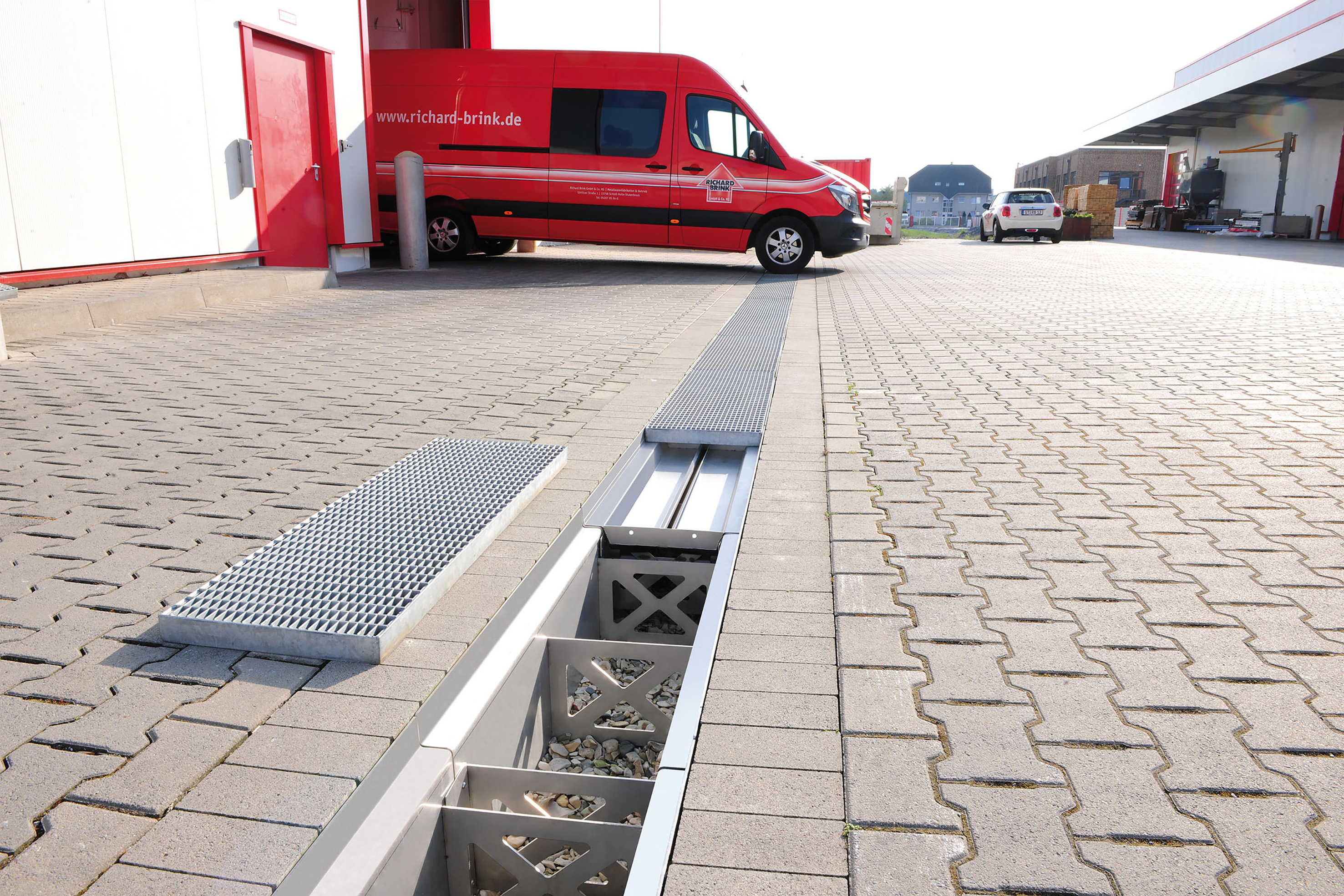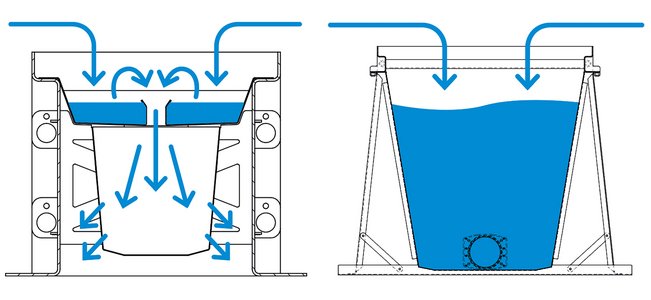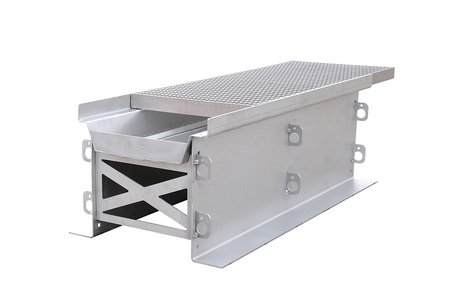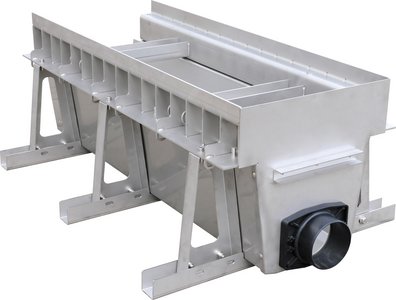Extreme weather events, generally in the form of heavy rainfall, are now seen in every part of Germany year after year. Solutions are therefore needed to counter this ever worsening problem. Richard Brink, a trusted partner in the field of drainage and dewatering, provides two solutions developed in-house: on the one hand, the RigoMax infiltration channel; on the other, the FerroMax dewatering channel that connects to the sewer system.
Adapted to all site conditions
Both channels are produced in stainless steel or hot-dip galvanised steel. Three standard variants are available, each measuring 1,000mm long with differing heights and corresponding widths. A width of 388mm makes for a holding capacity of around 100 litres, a width of 588mm equates to a capacity of over 250 litres, and the maximum width of 1,088mm results in a total volume of between 900 and 1,000 litres per metre. The metal products manufacturer from Eastern Westphalia can also adapt all dimensions on request to create bespoke products. The robust construction, for example with 4mm-thick frames as a grating support, is designed for a wheel load of up to 10 tonnes. Anchor tabs along either side allow the channel to be set in a concrete foundation for increased stability. A range of grating designs are available that also beautifully round off the channel.
If retention channels are to be installed in an area that does not have a permeable substrate, or if the channels are to be connected directly to the sewer system, the FerroMax is the ideal solution. Depending on the nominal dimension that can be connected on site, the channel is fitted with a drain nozzle during production that measures between DN 50 and DN 200. The channel body of the FerroMax thus provides temporary storage, holding rainwater before gradually releasing it into the sewer system. Base feet on the outside of the channel strengthen the channel body while making the product easier to handle during installation.
We recommend using the RigoMax gravel-filled drainage channel in areas with a permeable substrate. Thanks to its open base, held stable through the use of connection braces, water flowing into the channel is drained straight into the gravel layer that sits underneath. The RigoMax can also be fitted with an additional drain nozzle, which then acts as an emergency overflow. While the channel already features a filter to hold back coarse dirt, a second filter insert will be available in future as an optional extra which draws on a special granulate to bind dissolved substances such as heavy metals. This is a promising and in some cases already mandatory addition, especially when channels are used in areas exposed to traffic, where waste water may also be contaminated with oil residues or other harmful substances. The company Richard Brink therefore has an appropriate solution for potential heavy rain events, regardless of on-site circumstances.
Conflicting priorities of modern urban planning
The XXL channels produced by Richard Brink come with a key advantage: their huge potential to store water below the smallest of surface areas. This is a major challenge particularly in urban areas and industrial settings as sealed surfaces restrict the ground’s ability to store water and allow it to seep into the ground water. It is often not possible to completely unseal the surfaces in these areas because, as residential or commercial areas, they do not lend themselves well to all-encompassing measures, meaning sealed surfaces will remain prevalent. Moreover, municipalities are faced with the pressing task of creating new living space while also ensuring there are enough retention areas. Retention channels present a profitable addition here and sometimes even an alternative to unsealing when the area’s natural infiltration potential or sewer system is reaching its limits. Especially in the XXL model, the channels are able to temporarily store enormous amounts of rainwater under the smallest of surface areas.
(approx. 4,610 characters)









